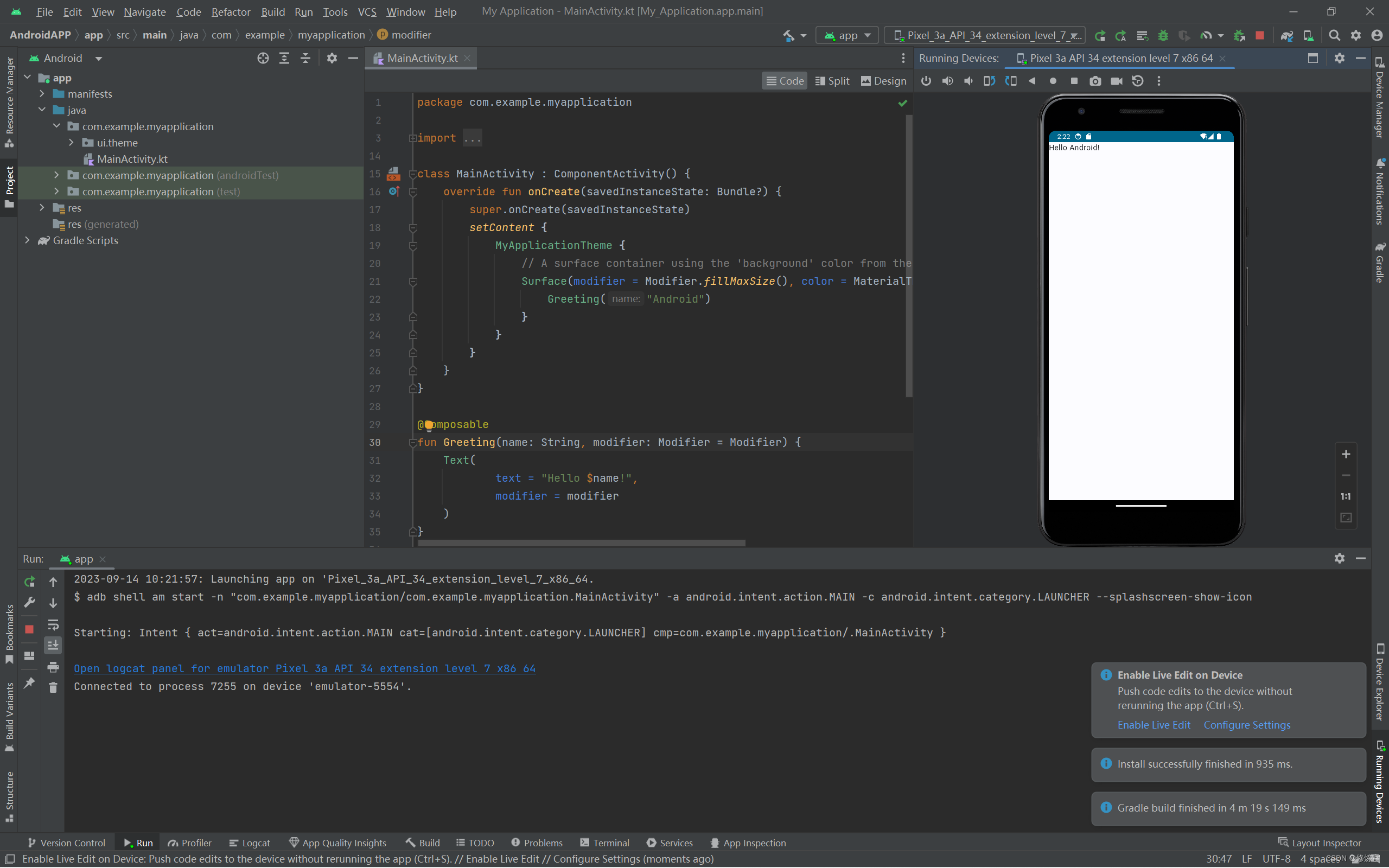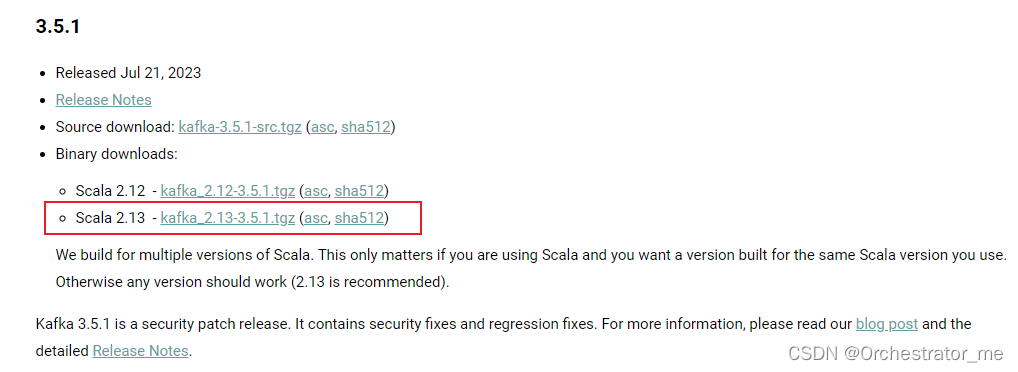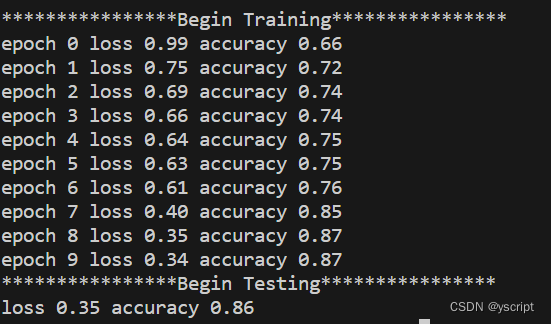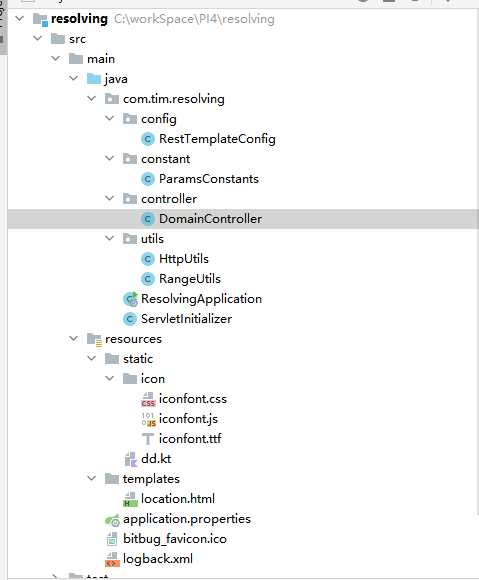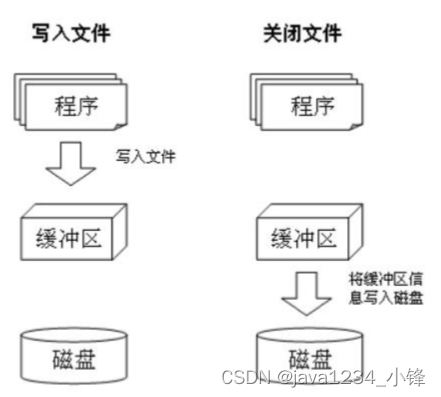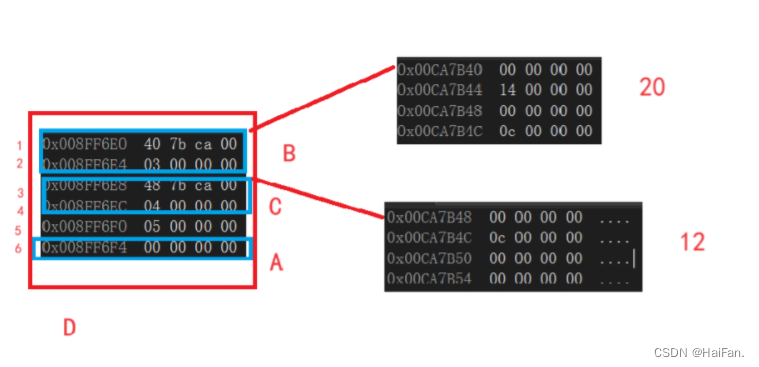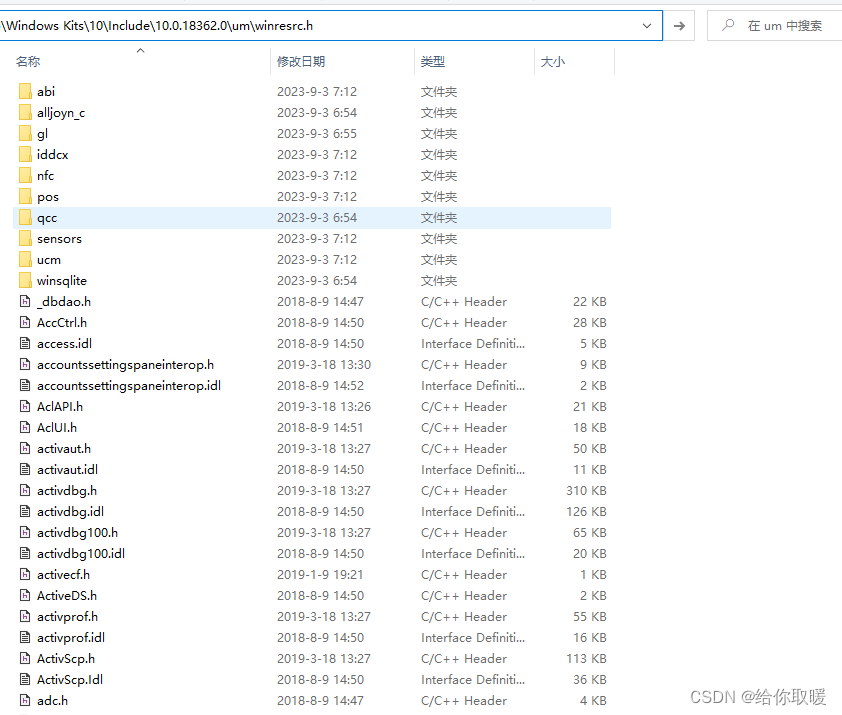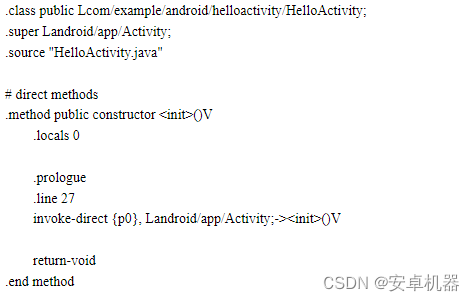文章目录
- 一、题目链接
- 二、准备工作
- 三、SQL 语句执行流程
- 四、BusTub 表结构
- 五、Task #1 - Access Method Executors
- 5.1 顺序扫描执行器
- 5.2 插入执行器
- 5.3 删除执行器
- 5.4 索引扫描执行器
- 六、Task #2 - Aggregation & Join Executors
- 6.1 聚合执行器
- 6.2 循环连接执行器
- 6.3 索引连接执行器
- 七、评测结果

一、题目链接
二、准备工作
Project #3 中的执行器需要通过 sqllogictest 进行测试,执行以下三条命令即可完成编译及运行:
atreus@AtreusMBP 9:18 bustub % cd build
atreus@AtreusMBP 9:18 build % make -j$(nproc) sqllogictest
atreus@AtreusMBP 9:19 build % ./bin/bustub-sqllogictest ../test/sql/p3.06-simple-agg.slt --verbose
此外也可以通过 CLion 进行运行和调试,具体配置如下,其中程序实参中的 slt 文件路径与工作目录需要根据自己的项目结构进行修改,建议自己新建一个 slt 文件专门用于调试,这样每次只要修改这个自定义 slt 文件的内容即可,而不需要修改编译参数。

其他准备工作见 CMU 15-445 Project #0 - C++ Primer 中的准备工作。
三、SQL 语句执行流程

根据 bustub 的架构图,在收到一条 SQL 语句后,查询处理层首先会通过解析器 Parser 将 SQL 语句解析为一颗抽象句法树 AST(Abstracct Syntax Tree)。接下来绑定器 Binder 会遍历这棵句法树,将表名、列名等映射到数据库中的实际对象上,并由计划器 Planner 生成初步的查询计划。查询计划会以树的形式表示,数据从叶子节点流向父节点。最后,优化器 Optimizer 会优化生成最终的查询计划,然后交由查询执行层的执行器执行,而这里面的部分执行器需要我们来实现。
以下面的 explain select * from test_1; 为例,绑定器将表名 test_1 绑定到 oid 为 20 的 test_1 实体表中,将 * 绑定到该表的所有列上。接下来计划器会生成对应的查询计划,这个查询计划包括 Projection 和 SeqScan 两个计划节点,数据会先由 SeqScan 处理,然后交给 Projection 处理。不过最后优化器会优化掉这里的投影操作,因为要查找的是所有字段,并不需要进行投影运算。最终,查询执行层会执行 SeqScan 对应的执行器完成实际的查询。
bustub> explain select * from test_1;
=== BINDER ===
BoundSelect {table=BoundBaseTableRef { table=test_1, oid=20 },columns=[test_1.colA, test_1.colB, test_1.colC, test_1.colD],groupBy=[],having=,where=,limit=,offset=,order_by=[],is_distinct=false,ctes=,
}
=== PLANNER ===
Projection { exprs=[#0.0, #0.1, #0.2, #0.3] } | (test_1.colA:INTEGER, test_1.colB:INTEGER, test_1.colC:INTEGER, test_1.colD:INTEGER)SeqScan { table=test_1 } | (test_1.colA:INTEGER, test_1.colB:INTEGER, test_1.colC:INTEGER, test_1.colD:INTEGER)
=== OPTIMIZER ===
SeqScan { table=test_1 } | (test_1.colA:INTEGER, test_1.colB:INTEGER, test_1.colC:INTEGER, test_1.colD:INTEGER)bustub> explain select * from test_1;
四、BusTub 表结构
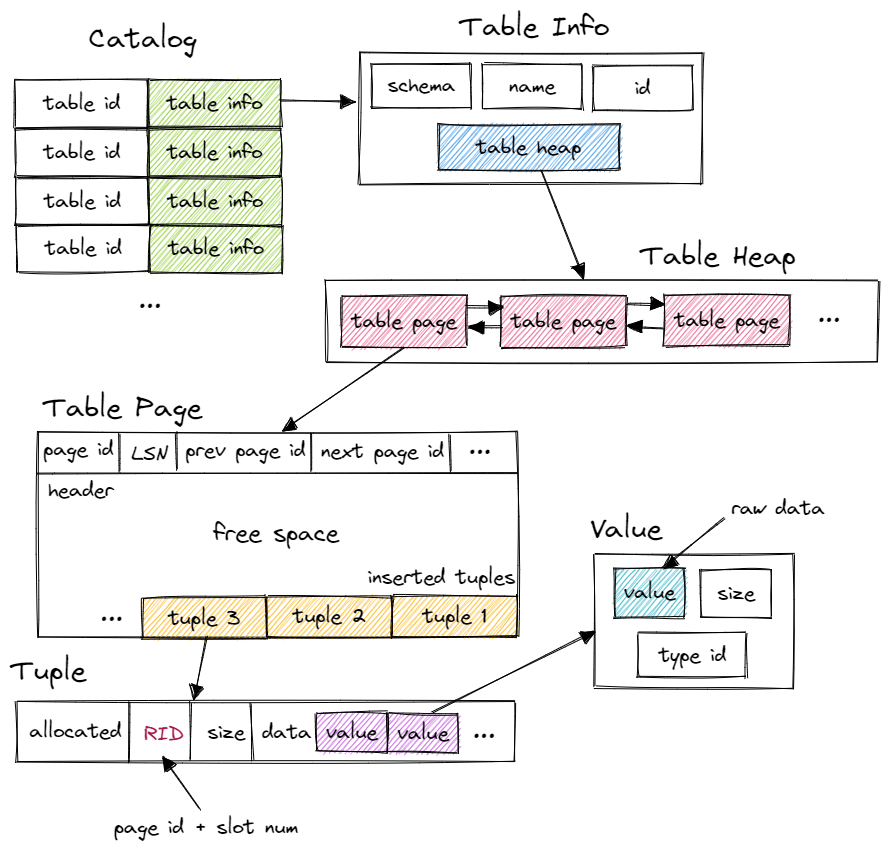
以上图片来自于 https://blog.eleven.wiki/posts/cmu15-445-project3-query-execution/,这位博主对 BusTub 中的表结构进行了直观的说明。
首先,我们从所有执行器的基类抽象执行器 AbstractExecutor 入手,抽象执行器实现了一个 tuple-at-a-time 形式的火山迭代器模型,它主要包括 Init() 和 Next() 两个成员函数,tuple-at-a-time 表明每次调用 Next() 函数会从当前执行器获取一个 tuple,火山模型则表明数据从子执行器向父执行器传递,根节点的输出即为最终的执行结果。
AbstractExecutor 只有执行器上下文 ExecutorContext 这一个成员变量,它包括当前事务 Transaction、缓冲池管理器 BufferPoolManager、事务管理器 TransactionManager、锁管理器 LockManager 以及目录 Catalog。不过在抽象执行器的实现类中,除了执行器上下文往往还会有一个计划节点 AbstractPlanNode 的实现类,用于表明将要执行的计划,这个后续也会被用到。
与表管理直接相关的就是执行器上下文中的目录 Catalog(见上图),在 DBMS 中,目录通常是非持久的,主要为数据库执行引擎中的执行器而设计。它可以解决表创建、表查找、索引创建和索引查找等操作。目录中主要包含了一个表标识符到表信息 TableInfo 的映射 std::unordered_map<table_oid_t, std::unique_ptr<TableInfo>> 和一个表名到表标识符的映射 std::unordered_map<std::string, table_oid_t>。
表信息 TableInfo 主要保存了有关表的一些元数据,其中最主要的就是 TableHeap,TableHeap 表示磁盘上的物理表,它是一个双向链表的页集合,通过 TableHeap 即可得到首个表页面 TablePage 中首个元组 Tuple(每个元组对应表中的一行数据)的迭代器,从而实现表遍历。
一个物理页面的大小为 4096 字节,其内部结构大致如下:
+-------------------+-------------------+ -----------------
| PageID(4) | LSN(4) |
+-------------------+-------------------+
| PrevPageId(4) | NextPageId(4) |
+-------------------+-------------------+
|FreeSpacePointer(4)| TupleCount(4) |
+-------------------+-------------------+
| Tuple_1 offset(4) | Tuple_1 size(4) | HEADER
+-------------------+-------------------+
| Tuple_2 offset(4) | Tuple_2 size(4) |
+-------------------+-------------------+
| Tuple_3 offset(4) | Tuple_3 size(4) |
+-------------------+-------------------+ -----------------
| ... |
+---------------------------------------+ FREE SPACE
| ... |
+---------------------------------------+ -----------------
| Tuple_3 |
+-------------------------+-------------+ INSERTED TUPLES
| Tuple_2 | Tuple_1 |
+-------------------------+-------------+ -----------------
五、Task #1 - Access Method Executors
5.1 顺序扫描执行器
bustub> explain select * from test_1;
=== BINDER ===
BoundSelect {table=BoundBaseTableRef { table=test_1, oid=20 },columns=[test_1.colA, test_1.colB, test_1.colC, test_1.colD],groupBy=[],having=,where=,limit=,offset=,order_by=[],is_distinct=false,ctes=,
}
=== PLANNER ===
Projection { exprs=[#0.0, #0.1, #0.2, #0.3] } | (test_1.colA:INTEGER, test_1.colB:INTEGER, test_1.colC:INTEGER, test_1.colD:INTEGER)SeqScan { table=test_1 } | (test_1.colA:INTEGER, test_1.colB:INTEGER, test_1.colC:INTEGER, test_1.colD:INTEGER)
=== OPTIMIZER ===
SeqScan { table=test_1 } | (test_1.colA:INTEGER, test_1.colB:INTEGER, test_1.colC:INTEGER, test_1.colD:INTEGER)bustub> explain select * from test_1;
/*** The SeqScanExecutor executor executes a sequential table scan.*/
class SeqScanExecutor : public AbstractExecutor {
public:/*** Construct a new SeqScanExecutor instance.* @param exec_ctx The executor context* @param plan The sequential scan plan to be executed*/SeqScanExecutor(ExecutorContext *exec_ctx, const SeqScanPlanNode *plan): AbstractExecutor(exec_ctx), plan_(plan), table_iter_(nullptr, RID(), nullptr) {}/** Initialize the sequential scan */void Init() override {TableInfo *table_info = exec_ctx_->GetCatalog()->GetTable(plan_->GetTableOid());table_heap_ = dynamic_cast<TableHeap *>(table_info->table_.get());table_iter_ = table_heap_->Begin(exec_ctx_->GetTransaction());}/*** Yield the next tuple from the sequential scan.* @param[out] tuple The next tuple produced by the scan* @param[out] rid The next tuple RID produced by the scan* @return `true` if a tuple was produced, `false` if there are no more tuples*/auto Next(Tuple *tuple, RID *rid) -> bool override {// 遍历结束返回 falseif (table_iter_ == table_heap_->End()) {return false;}// 填充元组信息及元组的 rid*tuple = *table_iter_;*rid = tuple->GetRid();table_iter_++;return true;}/** @return The output schema for the sequential scan */auto GetOutputSchema() const -> const Schema & override {return plan_->OutputSchema();}private:/** The sequential scan plan node to be executed */const SeqScanPlanNode *plan_;/** 待扫描表的表堆 */TableHeap *table_heap_;/** 待扫描表的迭代器 */TableIterator table_iter_;
};
5.2 插入执行器
bustub> explain insert into test_1 values (1000, 1, 1, 1);
=== BINDER ===
BoundInsert {table=BoundBaseTableRef { table=test_1, oid=20 },select= BoundSelect {table=BoundExpressionListRef { identifier=__values#0, values=[[1000, 1, 1, 1]] },columns=[__values#0.0, __values#0.1, __values#0.2, __values#0.3],groupBy=[],having=,where=,limit=,offset=,order_by=[],is_distinct=false,ctes=,}
}
=== PLANNER ===
Insert { table_oid=20 } | (__bustub_internal.insert_rows:INTEGER)Projection { exprs=[#0.0, #0.1, #0.2, #0.3] } | (__values#0.0:INTEGER, __values#0.1:INTEGER, __values#0.2:INTEGER, __values#0.3:INTEGER)Values { rows=1 } | (__values#0.0:INTEGER, __values#0.1:INTEGER, __values#0.2:INTEGER, __values#0.3:INTEGER)
=== OPTIMIZER ===
Insert { table_oid=20 } | (__bustub_internal.insert_rows:INTEGER)Values { rows=1 } | (__values#0.0:INTEGER, __values#0.1:INTEGER, __values#0.2:INTEGER, __values#0.3:INTEGER)
/*** InsertExecutor executes an insert on a table.* Inserted values are always pulled from a child executor.*/
class InsertExecutor : public AbstractExecutor {
public:/*** Construct a new InsertExecutor instance.* @param exec_ctx The executor context* @param plan The insert plan to be executed* @param child_executor The child executor from which inserted tuples are pulled*/InsertExecutor(ExecutorContext *exec_ctx, const InsertPlanNode *plan,std::unique_ptr<AbstractExecutor> &&child_executor): AbstractExecutor(exec_ctx), plan_(plan), child_executor_(std::move(child_executor)) {}/** Initialize the insert */void Init() override {child_executor_->Init();}/*** Yield the number of rows inserted into the table.* @param[out] tuple The integer tuple indicating the number of rows inserted into the table* @param[out] rid The next tuple RID produced by the insert (ignore, not used)* @return `true` if a tuple was produced, `false` if there are no more tuples** NOTE: InsertExecutor::Next() does not use the `rid` out-parameter.* NOTE: InsertExecutor::Next() returns true with number of inserted rows produced only once.*/auto Next([[maybe_unused]] Tuple *tuple, RID *rid) -> bool override {// 插入完毕返回 falseif (has_inserted_) {return false;}has_inserted_ = true;// 获取待插入的表信息及其索引列表TableInfo *table_info = exec_ctx_->GetCatalog()->GetTable(plan_->TableOid());std::vector<IndexInfo *> index_info = exec_ctx_->GetCatalog()->GetTableIndexes(table_info->name_);// 从子执行器 Values 中逐个获取元组并插入到表中,同时更新所有的索引int insert_count = 0;while (child_executor_->Next(tuple, rid)) {table_info->table_->InsertTuple(*tuple, rid, exec_ctx_->GetTransaction());for (const auto &index: index_info) {// 根据索引的模式从数据元组中构造索引元组,并插入到索引中Tuple key_tuple = tuple->KeyFromTuple(child_executor_->GetOutputSchema(), index->key_schema_,index->index_->GetMetadata()->GetKeyAttrs());index->index_->InsertEntry(key_tuple, *rid, exec_ctx_->GetTransaction());}insert_count++;}// 这里的 tuple 不再对应实际的数据行,而是用来存储插入操作的影响行数std::vector<Value> result{Value(INTEGER, insert_count)};*tuple = Tuple(result, &plan_->OutputSchema());return true;}/** @return The output schema for the insert */auto GetOutputSchema() const -> const Schema & override {return plan_->OutputSchema();};private:/** The insert plan node to be executed */const InsertPlanNode *plan_;/** 子执行器,对于插入操作来说通常是 Values 执行器 */std::unique_ptr<AbstractExecutor> child_executor_;/** 标识是否已经完成插入操作 */bool has_inserted_ = false;
};
5.3 删除执行器
bustub> explain delete from test_1 where colA = 1000;
=== BINDER ===
Delete { table=BoundBaseTableRef { table=test_1, oid=20 }, expr=(test_1.colA=1000) }
=== PLANNER ===
Delete { table_oid=20 } | (__bustub_internal.delete_rows:INTEGER)Filter { predicate=(#0.0=1000) } | (test_1.colA:INTEGER, test_1.colB:INTEGER, test_1.colC:INTEGER, test_1.colD:INTEGER)SeqScan { table=test_1 } | (test_1.colA:INTEGER, test_1.colB:INTEGER, test_1.colC:INTEGER, test_1.colD:INTEGER)
=== OPTIMIZER ===
Delete { table_oid=20 } | (__bustub_internal.delete_rows:INTEGER)SeqScan { table=test_1, filter=(#0.0=1000) } | (test_1.colA:INTEGER, test_1.colB:INTEGER, test_1.colC:INTEGER, test_1.colD:INTEGER)
/*** DeletedExecutor executes a delete on a table.* Deleted values are always pulled from a child.*/
class DeleteExecutor : public AbstractExecutor {
public:/*** Construct a new DeleteExecutor instance.* @param exec_ctx The executor context* @param plan The delete plan to be executed* @param child_executor The child executor that feeds the delete*/DeleteExecutor(ExecutorContext *exec_ctx, const DeletePlanNode *plan,std::unique_ptr<AbstractExecutor> &&child_executor): AbstractExecutor(exec_ctx), plan_(plan), child_executor_(std::move(child_executor)) {}/** Initialize the delete */void Init() override {child_executor_->Init();}/*** Yield the number of rows deleted from the table.* @param[out] tuple The integer tuple indicating the number of rows deleted from the table* @param[out] rid The next tuple RID produced by the delete (ignore, not used)* @return `true` if a tuple was produced, `false` if there are no more tuples** NOTE: DeleteExecutor::Next() does not use the `rid` out-parameter.* NOTE: DeleteExecutor::Next() returns true with the number of deleted rows produced only once.*/auto Next([[maybe_unused]] Tuple *tuple, RID *rid) -> bool override {// 删除完毕返回 falseif (has_deleted_) {return false;}has_deleted_ = true;// 获取待删除的表信息及其索引列表TableInfo *table_info = exec_ctx_->GetCatalog()->GetTable(plan_->TableOid());std::vector<IndexInfo *> index_info = exec_ctx_->GetCatalog()->GetTableIndexes(table_info->name_);// 从子执行器 Values 中逐个获取元组并插入到表中,同时更新所有的索引int delete_count = 0;while (child_executor_->Next(tuple, rid)) {table_info->table_->MarkDelete(*rid, exec_ctx_->GetTransaction());for (const auto &index: index_info) {// 根据索引的模式从数据元组中构造索引元组,并从索引中删除Tuple key_tuple = tuple->KeyFromTuple(child_executor_->GetOutputSchema(), index->key_schema_,index->index_->GetMetadata()->GetKeyAttrs());index->index_->DeleteEntry(key_tuple, *rid, exec_ctx_->GetTransaction());}delete_count++;}// 这里的 tuple 不再对应实际的数据行,而是用来存储插入操作的影响行数std::vector<Value> result{Value(INTEGER, delete_count)};*tuple = Tuple(result, &plan_->OutputSchema());return true;}/** @return The output schema for the delete */auto GetOutputSchema() const -> const Schema & override {return plan_->OutputSchema();};private:/** The delete plan node to be executed */const DeletePlanNode *plan_;/** The child executor from which RIDs for deleted tuples are pulled */std::unique_ptr<AbstractExecutor> child_executor_;/** 标识是否已经完成删除操作 */bool has_deleted_ = false;
};
5.4 索引扫描执行器
bustub> create index index_colA on test_1(colA);
Index created with id = 0
bustub> explain select * from test_1 order by colA;
=== BINDER ===
BoundSelect {table=BoundBaseTableRef { table=test_1, oid=20 },columns=[test_1.colA, test_1.colB, test_1.colC, test_1.colD],groupBy=[],having=,where=,limit=,offset=,order_by=[BoundOrderBy { type=Default, expr=test_1.colA }],is_distinct=false,ctes=,
}
=== PLANNER ===
Sort { order_bys=[(Default, #0.0)] } | (test_1.colA:INTEGER, test_1.colB:INTEGER, test_1.colC:INTEGER, test_1.colD:INTEGER)Projection { exprs=[#0.0, #0.1, #0.2, #0.3] } | (test_1.colA:INTEGER, test_1.colB:INTEGER, test_1.colC:INTEGER, test_1.colD:INTEGER)SeqScan { table=test_1 } | (test_1.colA:INTEGER, test_1.colB:INTEGER, test_1.colC:INTEGER, test_1.colD:INTEGER)
=== OPTIMIZER ===
IndexScan { index_oid=0 } | (test_1.colA:INTEGER, test_1.colB:INTEGER, test_1.colC:INTEGER, test_1.colD:INTEGER)
/*** IndexScanExecutor executes an index scan over a table.*/
class IndexScanExecutor : public AbstractExecutor {
public:/*** Creates a new index scan executor.* @param exec_ctx the executor context* @param plan the index scan plan to be executed*/IndexScanExecutor(ExecutorContext *exec_ctx, const IndexScanPlanNode *plan): AbstractExecutor(exec_ctx), plan_(plan) {}void Init() override {IndexInfo *index_info = exec_ctx_->GetCatalog()->GetIndex(plan_->GetIndexOid());tree_ = dynamic_cast<BPlusTreeIndexForOneIntegerColumn *>(index_info->index_.get());table_iter_ = tree_->GetBeginIterator();table_heap_ = exec_ctx_->GetCatalog()->GetTable(index_info->table_name_)->table_.get();}auto Next(Tuple *tuple, RID *rid) -> bool override {// 遍历结束返回 falseif (table_iter_ == tree_->GetEndIterator()) {return false;}// 获取元组的 rid 并填充元组内容*rid = (*table_iter_).second;table_heap_->GetTuple(*rid, tuple, exec_ctx_->GetTransaction());++table_iter_;return true;}auto GetOutputSchema() const -> const Schema & override {return plan_->OutputSchema();}private:/** The index scan plan node to be executed. */const IndexScanPlanNode *plan_;/** 待扫描表的 B+ 树索引 */BPlusTreeIndexForOneIntegerColumn *tree_;/** 待扫描表的 B+ 树索引迭代器 */BPlusTreeIndexIteratorForOneIntegerColumn table_iter_;/** 待扫描表的表堆 */TableHeap *table_heap_;
};
六、Task #2 - Aggregation & Join Executors
6.1 聚合执行器
bustub> explain select sum(colA) from test_1;
=== BINDER ===
BoundSelect {table=BoundBaseTableRef { table=test_1, oid=20 },columns=[sum([test_1.colA])],groupBy=[],having=,where=,limit=,offset=,order_by=[],is_distinct=false,ctes=,
}
=== PLANNER ===
Projection { exprs=[#0.0] } | (<unnamed>:INTEGER)Agg { types=[sum], aggregates=[#0.0], group_by=[] } | (agg#0:INTEGER)SeqScan { table=test_1 } | (test_1.colA:INTEGER, test_1.colB:INTEGER, test_1.colC:INTEGER, test_1.colD:INTEGER)
=== OPTIMIZER ===
Agg { types=[sum], aggregates=[#0.0], group_by=[] } | (<unnamed>:INTEGER)SeqScan { table=test_1 } | (test_1.colA:INTEGER, test_1.colB:INTEGER, test_1.colC:INTEGER, test_1.colD:INTEGER)
| id | name | position | camp |
|---|---|---|---|
| 0 | Ezreal | ADC | Piltover |
| 1 | Vi | JUN | Piltover |
| 2 | Jayce | TOP | Piltover |
| 3 | Zed | MID | Ionia |
| 4 | Xayah | ADC | Ionia |
| 5 | Thresh | SUP | Shadow Isles |
我们以分组聚合查询语句 select count(name) from table group by camp; 为例简要说明一下聚合执行器的执行流程:
Init()函数首先从子执行器中逐行获取数据,并根据每行数据构建聚合键和聚合值。其中聚合键用于标识该行数据属于哪一个聚合组,这里是按照阵营camp分组,因此聚合键会有Piltover、Ionia和Shadow Isles三种取值,这样所有数据被分成三个聚合组。当然,如果没group by子句,那么所有数据都会被分到同一个聚合组中,这个聚合组的聚合键为一个group_bys_.size() = 0的AggregateKey。而聚合值就是待聚合的列的值,这里的聚合列是name,因此这五个 Tuple 中生成的聚合值即为对应的name属性的值。- 对于每个提取的数据行,
Init()函数还会通过InsertCombine()将相应的聚合值聚合到到相应的聚合组中。具体的聚合规则由CombineAggregateValues()函数中的实现来决定。 - 经过
Init()函数的处理,以上六条数据会被整理为[{"Piltover": 3}, {"Ionia": 2}, {"Shadow Isles": 1}]三个聚合组(对应于聚合哈希表中的三个键值对)。 - 最后,
Next()函数会通过哈希迭代器依次获取每个聚合组的键与值,返回给父执行器。
/*** A simplified hash table that has all the necessary functionality for aggregations.*/
class SimpleAggregationHashTable {
public:/*** Construct a new SimpleAggregationHashTable instance.* @param agg_exprs the aggregation expressions* @param agg_types the types of aggregations*/SimpleAggregationHashTable(const std::vector<AbstractExpressionRef> &agg_exprs,const std::vector<AggregationType> &agg_types): agg_exprs_{agg_exprs}, agg_types_{agg_types} {}/** @return The initial aggregate value for this aggregation executor */auto GenerateInitialAggregateValue() -> AggregateValue {std::vector<Value> values{};for (const auto &agg_type: agg_types_) {switch (agg_type) {case AggregationType::CountStarAggregate:// Count start starts at zero.values.emplace_back(ValueFactory::GetIntegerValue(0));break;case AggregationType::CountAggregate:case AggregationType::SumAggregate:case AggregationType::MinAggregate:case AggregationType::MaxAggregate:// Others starts at null.values.emplace_back(ValueFactory::GetNullValueByType(TypeId::INTEGER));break;}}return {values};}/*** Combines the input into the aggregation result.* @param[out] result The output aggregate value* @param input The input value*/void CombineAggregateValues(AggregateValue *result, const AggregateValue &input) {for (uint32_t i = 0; i < agg_exprs_.size(); i++) {auto &result_value = result->aggregates_[i];auto &input_value = input.aggregates_[i];switch (agg_types_[i]) {case AggregationType::CountStarAggregate:// count(*) 对每一行都执行 +1 操作result_value = result_value.Add(ValueFactory::GetIntegerValue(1));break;case AggregationType::CountAggregate:// count(column) 只对非空行进行 +1 操作,同时 bustub 不支持 count(distinct column) 聚合操作if (!input_value.IsNull()) {// 如果 result_value 为空需要从 ValueFactory 中获取if (result_value.IsNull()) {result_value = ValueFactory::GetIntegerValue(0);}result_value = result_value.Add(ValueFactory::GetIntegerValue(1));}break;case AggregationType::SumAggregate:// sum(column) 只处理非空行if (!input_value.IsNull()) {// 如果 result_value 为空初始化为 input_value ,否则直接累加if (result_value.IsNull()) {result_value = input_value;} else {result_value = result_value.Add(input_value);}}break;case AggregationType::MinAggregate:// min(column) 只处理非空行if (!input_value.IsNull()) {// 如果 result_value 为空初始化为 input_value ,否则取最小值if (result_value.IsNull()) {result_value = input_value;} else {result_value = result_value.Min(input_value);}}break;case AggregationType::MaxAggregate:// max(column) 只处理非空行if (!input_value.IsNull()) {// 如果 result_value 为空初始化为 input_value ,否则取最大值if (result_value.IsNull()) {result_value = input_value;} else {result_value = result_value.Max(input_value);}}break;default:throw Exception("unknown AggregationType");}}}/*** 检查当前表是否为空,如果为空生成默认的聚合值,对于 count(*) 来说是 0,对于其他聚合函数来说是 integer_null* 等指定了具体类型的空值。 之所以要进行这次额外检查,是因为空表的聚合操作不是没有返回值,而是返回了一个默认的聚合值。** @param[out] value 对应于不同聚合操作生成的初始聚合值。* @return `true` 当前表为空,需要返回一个初始聚合值,`false` 不需要返回初始聚合值。*/auto CheckIsNullTable(AggregateValue *value) -> bool {// 从未检查过或者表不为空if (is_checked_ || !ht_.empty()) {return false;}is_checked_ = true;// 遍历聚合表达式列表,为每个聚合函数生成初始的聚合值for (size_t i = 0; i < agg_exprs_.size(); i++) {*value = GenerateInitialAggregateValue();}return true;}/*** Inserts a value into the hash table and then combines it with the current aggregation.* @param agg_key the key to be inserted* @param agg_val the value to be inserted*/void InsertCombine(const AggregateKey &agg_key, const AggregateValue &agg_val) {if (ht_.count(agg_key) == 0) {ht_.insert({agg_key, GenerateInitialAggregateValue()});}CombineAggregateValues(&ht_[agg_key], agg_val);}/*** Clear the hash table*/void Clear() { ht_.clear(); }/** An iterator over the aggregation hash table */class Iterator {public:/** Creates an iterator for the aggregate map. */explicit Iterator(std::unordered_map<AggregateKey, AggregateValue>::const_iterator iter) : iter_{iter} {}/** @return The key of the iterator */auto Key() -> const AggregateKey & { return iter_->first; }/** @return The value of the iterator */auto Val() -> const AggregateValue & { return iter_->second; }/** @return The iterator before it is incremented */auto operator++() -> Iterator & {++iter_;return *this;}/** @return `true` if both iterators are identical */auto operator==(const Iterator &other) -> bool { return this->iter_ == other.iter_; }/** @return `true` if both iterators are different */auto operator!=(const Iterator &other) -> bool { return this->iter_ != other.iter_; }private:/** Aggregates map */std::unordered_map<AggregateKey, AggregateValue>::const_iterator iter_;};/** @return Iterator to the start of the hash table */auto Begin() -> Iterator { return Iterator{ht_.cbegin()}; }/** @return Iterator to the end of the hash table */auto End() -> Iterator { return Iterator{ht_.cend()}; }private:/** The hash table is just a map from aggregate keys to aggregate values */std::unordered_map<AggregateKey, AggregateValue> ht_{};/** The aggregate expressions that we have */const std::vector<AbstractExpressionRef> &agg_exprs_;/** The types of aggregations that we have */const std::vector<AggregationType> &agg_types_;/** 标识是否进行过空表检查 */bool is_checked_ = false;
};/*** AggregationExecutor executes an aggregation operation (e.g. COUNT, SUM, MIN, MAX)* over the tuples produced by a child executor.*/
class AggregationExecutor : public AbstractExecutor {
public:/*** Construct a new AggregationExecutor instance.* @param exec_ctx The executor context* @param plan The insert plan to be executed* @param child_executor The child executor from which inserted tuples are pulled (may be `nullptr`)*/AggregationExecutor(ExecutorContext *exec_ctx, const AggregationPlanNode *plan,std::unique_ptr<AbstractExecutor> &&child): AbstractExecutor(exec_ctx),plan_(plan),child_(std::move(child)),aht_(plan->GetAggregates(), plan->GetAggregateTypes()),aht_iterator_(aht_.Begin()) {}/** Initialize the aggregation */void Init() override {child_->Init();Tuple tuple;RID rid;// 将每个 tuple 分配到指定的聚合分组,并更新该分组的聚合值while (child_->Next(&tuple, &rid)) {// 获取该 tuple 对应聚合键,这个聚合键表明了它的所属分组,聚合键的本质是用于分组的列的值AggregateKey agg_key = this->MakeAggregateKey(&tuple);// 获取该 tuple 对应的聚合值,聚合值的本质是待聚合的列的值AggregateValue agg_value = this->MakeAggregateValue(&tuple);// 将该 tuple 的聚合值合并到对应聚合分组的聚合值中,对于不同的聚合函数有不同的聚合方式aht_.InsertCombine(agg_key, agg_value);}aht_iterator_ = aht_.Begin();}/*** Yield the next tuple from the insert.* @param[out] tuple The next tuple produced by the aggregation* @param[out] rid The next tuple RID produced by the aggregation* @return `true` if a tuple was produced, `false` if there are no more tuples*/auto Next(Tuple *tuple, RID *rid) -> bool override {if (aht_iterator_ == aht_.End()) {// 如果存在 group by 子句,则不需要对每个分组的聚合结果进行进一步的聚合if (!plan_->GetGroupBys().empty()) {return false;}AggregateValue result_value;// 如果对空表执行聚合操作直接返回初始化后的元组if (aht_.CheckIsNullTable(&result_value)) {*tuple = Tuple(result_value.aggregates_, &plan_->OutputSchema());*rid = tuple->GetRid();return true;}return false;}// 获取当前迭代器对应聚合分组的聚合键和和聚合值AggregateKey agg_key = aht_iterator_.Key();AggregateValue agg_value = aht_iterator_.Val();std::vector<Value> values;values.reserve(agg_key.group_bys_.size() + agg_value.aggregates_.size());// 向结果集中追加聚合分组的键for (const auto &group_by_key: agg_key.group_bys_) {values.emplace_back(group_by_key);}// 向结果集中追加聚合分组的聚合值for (const auto &group_by_value: agg_value.aggregates_) {values.emplace_back(group_by_value);}*tuple = Tuple(values, &plan_->OutputSchema());*rid = tuple->GetRid();++aht_iterator_;return true;}/** @return The output schema for the aggregation */auto GetOutputSchema() const -> const Schema & override { return plan_->OutputSchema(); };/** Do not use or remove this function, otherwise you will get zero points. */auto GetChildExecutor() const -> const AbstractExecutor * { return child_.get(); }private:/** @return The tuple as an AggregateKey */auto MakeAggregateKey(const Tuple *tuple) -> AggregateKey {std::vector<Value> keys;for (const auto &expr: plan_->GetGroupBys()) {keys.emplace_back(expr->Evaluate(tuple, child_->GetOutputSchema()));}return {keys};}/** @return The tuple as an AggregateValue */auto MakeAggregateValue(const Tuple *tuple) -> AggregateValue {std::vector<Value> vals;for (const auto &expr: plan_->GetAggregates()) {vals.emplace_back(expr->Evaluate(tuple, child_->GetOutputSchema()));}return {vals};}private:/** The aggregation plan node */const AggregationPlanNode *plan_;/** The child executor that produces tuples over which the aggregation is computed */std::unique_ptr<AbstractExecutor> child_;/** Simple aggregation hash table */SimpleAggregationHashTable aht_;/** Simple aggregation hash table iterator */SimpleAggregationHashTable::Iterator aht_iterator_;
};
一个用于演示分组聚合和空表聚合执行流程的测试用例:
statement ok
create table legends(name varchar(128), camp varchar(128));statement ok
insert into legends values ('Ezreal', 'Piltover'), ('Vi', 'Piltover'), ('Jayce', 'Piltover'), ('Zed', 'Ionia'), ('Xayah', 'Ionia');statement ok
select count(name) from legends group by camp;statement ok
delete from legends;query
select count(*) from legends;
----
0query
select count(camp) from legends;
----
integer_null
6.2 循环连接执行器
bustub> EXPLAIN SELECT * FROM test_1 LEFT OUTER JOIN test_2 ON test_1.colA = test_2.colA;
=== BINDER ===
BoundSelect {table=BoundJoin { type=Left, left=BoundBaseTableRef { table=test_1, oid=20 }, right=BoundBaseTableRef { table=test_2, oid=21 }, condition=(test_1.colA=test_2.colA) },columns=[test_1.colA, test_1.colB, test_1.colC, test_1.colD, test_2.colA, test_2.colB, test_2.colC],groupBy=[],having=,where=,limit=,offset=,order_by=[],is_distinct=false,ctes=,
}
=== PLANNER ===
Projection { exprs=[#0.0, #0.1, #0.2, #0.3, #0.4, #0.5, #0.6] } | (test_1.colA:INTEGER, test_1.colB:INTEGER, test_1.colC:INTEGER, test_1.colD:INTEGER, test_2.colA:INTEGER, test_2.colB:INTEGER, test_2.colC:INTEGER)NestedLoopJoin { type=Left, predicate=(#0.0=#1.0) } | (test_1.colA:INTEGER, test_1.colB:INTEGER, test_1.colC:INTEGER, test_1.colD:INTEGER, test_2.colA:INTEGER, test_2.colB:INTEGER, test_2.colC:INTEGER)SeqScan { table=test_1 } | (test_1.colA:INTEGER, test_1.colB:INTEGER, test_1.colC:INTEGER, test_1.colD:INTEGER)SeqScan { table=test_2 } | (test_2.colA:INTEGER, test_2.colB:INTEGER, test_2.colC:INTEGER)
=== OPTIMIZER ===
HashJoin { type=Left, left_key=#0.0, right_key=#0.0 } | (test_1.colA:INTEGER, test_1.colB:INTEGER, test_1.colC:INTEGER, test_1.colD:INTEGER, test_2.colA:INTEGER, test_2.colB:INTEGER, test_2.colC:INTEGER)SeqScan { table=test_1 } | (test_1.colA:INTEGER, test_1.colB:INTEGER, test_1.colC:INTEGER, test_1.colD:INTEGER)SeqScan { table=test_2 } | (test_2.colA:INTEGER, test_2.colB:INTEGER, test_2.colC:INTEGER)
数据库中的连接运算
/*** NestedLoopJoinExecutor executes a nested-loop JOIN on two tables.*/
class NestedLoopJoinExecutor : public AbstractExecutor {
public:/*** Construct a new NestedLoopJoinExecutor instance.* @param exec_ctx The executor context* @param plan The NestedLoop join plan to be executed* @param left_executor The child executor that produces tuple for the left side of join* @param right_executor The child executor that produces tuple for the right side of join*/NestedLoopJoinExecutor(ExecutorContext *exec_ctx, const NestedLoopJoinPlanNode *plan,std::unique_ptr<AbstractExecutor> &&left_executor,std::unique_ptr<AbstractExecutor> &&right_executor): AbstractExecutor(exec_ctx),plan_(plan),left_executor_(std::move(left_executor)),right_executor_(std::move(right_executor)) {}/** Initialize the join */void Init() override {left_executor_->Init();right_executor_->Init();// 从 left_executor_ 和 right_executor_ 中获取两张表中的所有元组Tuple tuple;RID rid;std::vector<Tuple> left_tuples;std::vector<Tuple> right_tuples;while (left_executor_->Next(&tuple, &rid)) {left_tuples.emplace_back(tuple);}while (right_executor_->Next(&tuple, &rid)) {right_tuples.emplace_back(tuple);}// 依次连接 left_tuples 和 right_tuples 中的所有元组Schema left_schema = left_executor_->GetOutputSchema();Schema right_schema = right_executor_->GetOutputSchema();for (auto &left_tuple: left_tuples) {// 标识 left_tuple 是否需要进行左外连接bool need_left_join = true;for (auto &right_tuple: right_tuples) {// 如果 left_tuple 中的连接字段与 right_tuple 中的连接字段的值相匹配,则 left_tuple 不需要进行左外连接Value join_result = plan_->predicate_->EvaluateJoin(&left_tuple, left_schema, &right_tuple, right_schema);if (!join_result.IsNull() && join_result.GetAs<bool>()) {// left_tuple 不需要进行左外连接need_left_join = false;// 依次将 left_tuple 和 right_tuple 中的值追加到结果集中std::vector<Value> values;for (size_t i = 0; i < left_schema.GetColumnCount(); i++) {values.emplace_back(left_tuple.GetValue(&left_schema, i));}for (size_t i = 0; i < right_schema.GetColumnCount(); i++) {values.emplace_back(right_tuple.GetValue(&right_schema, i));}results_.emplace(values, &plan_->OutputSchema());}}// 对 left_tuple 进行左外连接,right_tuple 中的字段均以对应的空值追加到结果集中if (need_left_join && plan_->GetJoinType() == JoinType::LEFT) {std::vector<Value> values;for (size_t i = 0; i < left_schema.GetColumnCount(); i++) {values.emplace_back(left_tuple.GetValue(&left_schema, i));}for (size_t i = 0; i < right_schema.GetColumnCount(); i++) {values.emplace_back(ValueFactory::GetNullValueByType(right_schema.GetColumn(i).GetType()));}results_.emplace(values, &plan_->OutputSchema());}}}/*** Yield the next tuple from the join.* @param[out] tuple The next tuple produced by the join* @param[out] rid The next tuple RID produced, not used by nested loop join.* @return `true` if a tuple was produced, `false` if there are no more tuples.*/auto Next(Tuple *tuple, RID *rid) -> bool override {// 从结果集队列中依次获取所有连接后的元组if (results_.empty()) {return false;}*tuple = results_.front();results_.pop();*rid = tuple->GetRid();return true;}/** @return The output schema for the insert */auto GetOutputSchema() const -> const Schema & override { return plan_->OutputSchema(); };private:/** The NestedLoopJoin plan node to be executed. */const NestedLoopJoinPlanNode *plan_;/** 左表子执行器,对于循环连接操作来说通常是左表上的 Scan 执行器 */std::unique_ptr<AbstractExecutor> left_executor_;/** 右表子执行器,对于循环连接操作来说通常是右表上的 Scan 执行器 */std::unique_ptr<AbstractExecutor> right_executor_;/** 连接结果集 */std::queue<Tuple> results_;
};
statement ok
create table provinces
(province_name varchar(255),country_name varchar(255),capital_name varchar(255)
);statement ok
insert into provinces
values ('Guangdong', 'China', 'Guangzhou'),('Sichuan', 'China', 'Chengdu'),('Jiangsu', 'China', 'Nanjing'),('California', 'USA', 'Sacramento'),('Hawaii', 'USA', 'Honolulu'),('Texas', 'USA', 'Houston');statement ok
create table capital
(capital_name varchar(255),population int
);statement ok
insert into capital
values ('Guangzhou', 15000000),('Nanjing', 8000000),('Sacramento', 500000),('Honolulu', 380000),('Tokyo', 14000000),('London', 9000000);statement ok
create index capital_name_index on capital(capital_name);query rowsort
select *
from provinces
join capital on provinces.capital_name = capital.capital_name;
----
Guangdong China Guangzhou Guangzhou 15000000
Jiangsu China Nanjing Nanjing 8000000
California USA Sacramento Sacramento 500000
Hawaii USA Honolulu Honolulu 380000
6.3 索引连接执行器
bustub> CREATE TABLE t1(v1 int, v2 int);
Table created with id = 22
bustub> CREATE TABLE t2(v3 int, v4 int);
Table created with id = 23
bustub> CREATE INDEX t2v3 on t2(v3);
Index created with id = 0
bustub> EXPLAIN SELECT * FROM t2 INNER JOIN t1 ON v1 = v3;
=== BINDER ===
BoundSelect {table=BoundJoin { type=Inner, left=BoundBaseTableRef { table=t2, oid=23 }, right=BoundBaseTableRef { table=t1, oid=22 }, condition=(t1.v1=t2.v3) },columns=[t2.v3, t2.v4, t1.v1, t1.v2],groupBy=[],having=,where=,limit=,offset=,order_by=[],is_distinct=false,ctes=,
}
=== PLANNER ===
Projection { exprs=[#0.0, #0.1, #0.2, #0.3] } | (t2.v3:INTEGER, t2.v4:INTEGER, t1.v1:INTEGER, t1.v2:INTEGER)NestedLoopJoin { type=Inner, predicate=(#1.0=#0.0) } | (t2.v3:INTEGER, t2.v4:INTEGER, t1.v1:INTEGER, t1.v2:INTEGER)SeqScan { table=t2 } | (t2.v3:INTEGER, t2.v4:INTEGER)SeqScan { table=t1 } | (t1.v1:INTEGER, t1.v2:INTEGER)
=== OPTIMIZER ===
HashJoin { type=Inner, left_key=#0.0, right_key=#0.0 } | (t2.v3:INTEGER, t2.v4:INTEGER, t1.v1:INTEGER, t1.v2:INTEGER)SeqScan { table=t2 } | (t2.v3:INTEGER, t2.v4:INTEGER)SeqScan { table=t1 } | (t1.v1:INTEGER, t1.v2:INTEGER)
bustub> EXPLAIN SELECT * FROM t1 INNER JOIN t2 ON v1 = v3;
=== BINDER ===
BoundSelect {table=BoundJoin { type=Inner, left=BoundBaseTableRef { table=t1, oid=22 }, right=BoundBaseTableRef { table=t2, oid=23 }, condition=(t1.v1=t2.v3) },columns=[t1.v1, t1.v2, t2.v3, t2.v4],groupBy=[],having=,where=,limit=,offset=,order_by=[],is_distinct=false,ctes=,
}
=== PLANNER ===
Projection { exprs=[#0.0, #0.1, #0.2, #0.3] } | (t1.v1:INTEGER, t1.v2:INTEGER, t2.v3:INTEGER, t2.v4:INTEGER)NestedLoopJoin { type=Inner, predicate=(#0.0=#1.0) } | (t1.v1:INTEGER, t1.v2:INTEGER, t2.v3:INTEGER, t2.v4:INTEGER)SeqScan { table=t1 } | (t1.v1:INTEGER, t1.v2:INTEGER)SeqScan { table=t2 } | (t2.v3:INTEGER, t2.v4:INTEGER)
=== OPTIMIZER ===
NestedIndexJoin { type=Inner, key_predicate=#0.0, index=t2v3, index_table=t2 } | (t1.v1:INTEGER, t1.v2:INTEGER, t2.v3:INTEGER, t2.v4:INTEGER)SeqScan { table=t1 } | (t1.v1:INTEGER, t1.v2:INTEGER)
/*** IndexJoinExecutor executes index join operations.*/
class NestIndexJoinExecutor : public AbstractExecutor {
public:/*** Creates a new nested index join executor.* @param exec_ctx the context that the hash join should be performed in* @param plan the nested index join plan node* @param child_executor the outer table*/NestIndexJoinExecutor(ExecutorContext *exec_ctx, const NestedIndexJoinPlanNode *plan,std::unique_ptr<AbstractExecutor> &&child_executor): AbstractExecutor(exec_ctx), plan_(plan), left_executor_(std::move(child_executor)) {}auto GetOutputSchema() const -> const Schema & override {return plan_->OutputSchema();}void Init() override {left_executor_->Init();Schema left_schema = left_executor_->GetOutputSchema();// 获取右表中的索引IndexInfo *right_index_info = exec_ctx_->GetCatalog()->GetIndex(plan_->GetIndexOid());Index *right_index = right_index_info->index_.get();TableInfo *right_table_info = exec_ctx_->GetCatalog()->GetTable(plan_->GetInnerTableOid());Schema right_schema = right_table_info->schema_;TableHeap *right_table = right_table_info->table_.get();Tuple left_tuple;RID left_rid;while (left_executor_->Next(&left_tuple, &left_rid)) {// 标识 left_tuple 是否需要进行左外连接bool need_left_join = true;// 根据左表中的连接字段的值在 right_index 中查找所有匹配的 RIDValue left_key_value = plan_->KeyPredicate()->Evaluate(&left_tuple, left_schema);Tuple left_key_tuple = Tuple(std::vector<Value>{left_key_value}, &right_index_info->key_schema_);std::vector<RID> result_rids;right_index->ScanKey(left_key_tuple, &result_rids, nullptr);// 依次处理右表中所有匹配的 RIDfor (auto &right_rid: result_rids) {// 当前左元组不需要进行左外连接need_left_join = false;// 依次将左元组和右元组中的值追加到结果集中Tuple right_tuple;right_table->GetTuple(right_rid, &right_tuple, exec_ctx_->GetTransaction());std::vector<Value> values;for (size_t i = 0; i < left_schema.GetColumnCount(); i++) {values.emplace_back(left_tuple.GetValue(&left_schema, i));}for (size_t i = 0; i < right_schema.GetColumnCount(); i++) {values.emplace_back(right_tuple.GetValue(&right_schema, i));}results_.emplace(values, &plan_->OutputSchema());}// 对当前左元组进行左外连接if (need_left_join && plan_->join_type_ == JoinType::LEFT) {std::vector<Value> values;for (size_t i = 0; i < left_schema.GetColumnCount(); i++) {values.emplace_back(left_tuple.GetValue(&left_schema, i));}for (size_t i = 0; i < right_schema.GetColumnCount(); i++) {values.emplace_back(ValueFactory::GetNullValueByType(right_schema.GetColumn(i).GetType()));}results_.emplace(values, &plan_->OutputSchema());}}}auto Next(Tuple *tuple, RID *rid) -> bool override {// 从结果集队列中依次获取所有连接后的元组if (results_.empty()) {return false;}*tuple = results_.front();results_.pop();*rid = tuple->GetRid();return true;}private:/** The nested index join plan node. */const NestedIndexJoinPlanNode *plan_;/** 左表子执行器,对于索引连接操作来说通常是左表上的 Scan 执行器 */std::unique_ptr<AbstractExecutor> left_executor_;/** 连接结果集 */std::queue<Tuple> results_;
};
statement ok
create table provinces
(province_name varchar(255),country_name varchar(255),capital_id int
);statement ok
insert into provinces
values ('Guangdong', 'China', 1),('Sichuan', 'China', 2),('Jiangsu', 'China', 3),('California', 'USA', 4),('Hawaii', 'USA', 5),('Texas', 'USA', 6);statement ok
create table capital
(capital_id int,population int
);statement ok
insert into capital
values (1, 15000000),(3, 8000000),(4, 500000),(5, 380000),(7, 14000000),(8, 9000000);statement ok
create index capital_id_index on capital(capital_id);query rowsort
select *
from provinces
join capital on provinces.capital_id = capital.capital_id;
----
Guangdong China 1 1 15000000
Jiangsu China 3 3 8000000
California USA 4 4 500000
Hawaii USA 5 5 380000
七、评测结果

参考:
https://blog.eleven.wiki/posts/cmu15-445-project3-query-execution/
https://blog.csdn.net/AntiO2/article/details/131147264
https://www.bilibili.com/video/BV1184y137rG/





